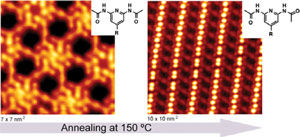RIKEN and SISSA develop new biological analysis methods
Researchers in Japan and Italy have developed new methods for biological analysis with dramatically higher sensitivity and detail than earlier techniques, expanding our understanding of RNA and its function in the cell. Described in Nature Methods, the methods open the door to the study of diseases well beyond the reach of current technologies.
Transcription, the process of creating an RNA copy from a DNA sequence, is the first step in the process of gene expression, resulting in the creation of proteins or formation of non-coding RNA. In recent years, the study of mammalian RNA transcripts has revealed a richness of complexity in transcript structure and function, while enabling researchers to characterize cancers and other diseases in more detail than ever before.
The two new methods developed, nanoCAGE and CAGEscan, greatly enhance this detail by extending the capabilities of Cap Analysis of Gene Expression (CAGE), a high-throughput method for profiling RNA transcripts. Developed by researchers with Dr. Piero Carninci at the RIKEN Omics Science Center and Dr. Stefano Gustincich at SISSA, the new methods link transcript start sites (TSSs) in genes, where RNA transcription begins, with the set of RNA molecules transcribed.
With a level of sensitivity one thousand times higher than CAGE, nanoCAGE presents powerful new possibilities for the analysis of small-sized samples. Using nanoCAGE, as few as 1000 cells is enough to detect all RNA transcripts in a cell and map the genomic regions that cause a gene to be expressed, providing a detailed picture of how gene expression is regulated. nanoCAGE thus overcomes the difficulty of obtaining large quantity of cells for studying and future diagnosing diseases such as cancer.
CAGEscan complements nanoCAGE by pinpointing the gene’s product – the RNA molecule – from the TSS where transcription begins. CAGEscan presents an instrumental tool for exploring the “RNA continent”, thousands of RNAs that do not code for proteins but function to modulate the cell’s genetic program. While presenting promising targets for new therapeutic approaches, these RNA have remained obscure in the past due to the limitations of existing technologies.
The two new methods greatly enhance the ability of researchers to work with tiny samples and improve the efficiency of RNA identification. Simple to perform and requiring no specialized equipment, nanoCAGE will be the technology of choice for molecular biologists, while CAGEscan will accelerate research in domains where our current knowledge of active genes is limited. Together, the two methods set the stage for new applications in drug screening, biopsy analysis and whole-transcriptome association studies.
Most read news
Topics
Organizations
Other news from the department science
These products might interest you

Kjel- / Dist Line by Büchi
Kjel- and Dist Line - steam distillation and Kjeldahl applications
Maximum accuracy and performance for your steam distillation and Kjeldahl applications

AZURA Purifier + LH 2.1 by KNAUER
Preparative Liquid Chromatography - New platform for more throughput
Save time and improve reproducibility during purification

Get the analytics and lab tech industry in your inbox
By submitting this form you agree that LUMITOS AG will send you the newsletter(s) selected above by email. Your data will not be passed on to third parties. Your data will be stored and processed in accordance with our data protection regulations. LUMITOS may contact you by email for the purpose of advertising or market and opinion surveys. You can revoke your consent at any time without giving reasons to LUMITOS AG, Ernst-Augustin-Str. 2, 12489 Berlin, Germany or by e-mail at revoke@lumitos.com with effect for the future. In addition, each email contains a link to unsubscribe from the corresponding newsletter.





















































